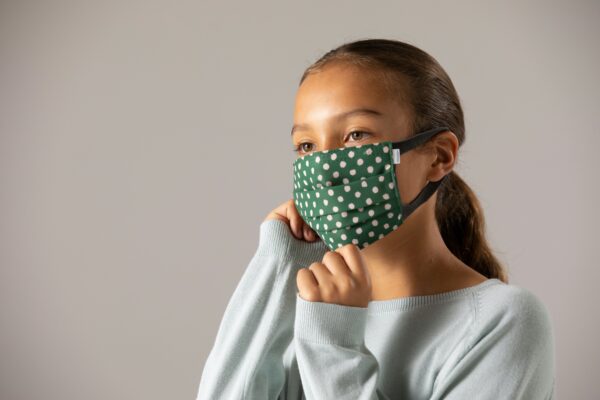Face Masks
How to Care for Your Fashion Mask: Cleaning and Maintenance Tips
If you’re looking to stay stylish while wearing a face mask during, then a fashion mask may be right for you. With their fun colours and patterns, they provide protection from germs while ironically keeping you fashionable – something we could all use in! But with proper cleaning and maintenance of your fashion mask, it can keep its vibrancy and still protect your health. In this blog post, we’ll show you how to care for your fashion masks so that they last through multiple wears. We’ll go over everything from laundering instructions to extending its lifespan in order to get the most out of your investment!
Why You Need to Clean Your Mask Regularly
Wearing a mask has become commonplace during the ongoing pandemic, but it’s not enough to just wear a mask. Regular cleaning of your mask is crucial in ensuring its effectiveness in keeping you and others safe. Masks can quickly become breeding grounds for bacteria and viruses, and wearing a dirty mask can actually increase your risk of infection. Additionally, a dirty mask can cause skin irritation and breakouts. To avoid these issues and keep yourself protected, make sure to clean your mask frequently. Whether you opt for a machine wash or hand wash, don’t forget to thoroughly dry it before wearing it again. Make mask cleaning a part of your routine, and stay healthy.
How to Clean Your Fabric Mask
Fabric masks have quickly become a part of our daily attire. However, it’s important to remember that in order to provide effective protection, they need to be properly cleaned. Not only does this prevent bacteria and viruses from lingering, but it also helps to maintain the integrity of the mask. Start by washing your mask in hot water with detergent. If you prefer, you can hand wash your mask with soap and hot water. Be sure to thoroughly rinse and dry your mask before wearing it again. Alternatively, you can place your mask in a paper bag and leave it for 72 hours before reuse. Regular cleaning of your mask is crucial to help keep you and others safe in these trying times.

Preventing Damage from Wear and Tear
As much as we love our belongings, the constant wear and tear we put them through is inevitable. From the soles of our shoes to the buttons on our clothes, everything gradually loses its original condition with use. Luckily, there are ways to prevent and minimise this damage. For example, regularly cleaning and maintaining our items can go a long way in preserving their integrity. Choosing durable materials when buying new items also helps them withstand the test of time. And lastly, being mindful of how we use and store our belongings can significantly reduce wear and tear. By taking these simple steps, we can prolong the lifespan of our possessions and save both money and resources in the long run.
Storing Your Mask Properly
In these unprecedented times, masks have become a crucial part of our daily attire. From disposable to reusable, masks are now available in different styles and fabrics. As important as wearing a mask is, equally important is storing them properly. Whether you’re at home or on-the-go, it’s essential to keep your mask clean and safe. One simple tip is to keep them in a clean, breathable bag or container. Avoid throwing them in the bottom of your purse or cramming them in your pocket. Consistently washing and drying your masks after each use also helps prevent any potential contamination. By taking a few extra minutes to properly store your mask, you’re not only protecting yourself, but those around you as well.
Choosing the Right Material for Your Mask
When it comes to selecting the right material for your mask, there’s a lot to consider. The most important factor is effectiveness – you want a material that is capable of filtering out potential pathogens or particles. Look for options such as cotton or surgical-grade material, which have been shown to be effective in blocking droplets that could carry viruses. Additionally, the breathability of the material is important for your comfort level. You don’t want your mask to be too stifling or hot, but still want to maximise protection. Lastly, consider the durability of the material. Will it hold up over time and through multiple washings? By keeping all of these factors in mind and doing your research, you can make an informed decision on the right material for your mask.

Tips For Replacing a Worn Out Mask
Wearing a mask has become an integral part of our daily routine as we navigate the COVID-19 pandemic. However, constantly wearing the same mask can cause it to become worn out and less effective. If you find yourself in this situation, it’s important to replace your mask as soon as possible. But, how do you do it? Firstly, make sure you have a spare mask on hand before discarding the old one. When removing the old mask, make sure to avoid touching the inside of it to prevent the spread of germs. After discarding the old mask, wash your hands thoroughly before putting on the new one. Remember that a good-fitting mask, with multiple layers of fabric, is the most effective in reducing the spread of the virus. Don’t forget to continue practicing social distancing, washing your hands regularly, and avoiding large gatherings to stay healthy and safe.
Cleaning your mask regularly, choosing the right material, and storing it safely are essential to protecting yourself from illnesses. Always make sure to inspect the material of a mask before purchase; if possible opt for one with a filter pocket to ensure you maximise its protective efficacy. You can keep it clean and in good condition by cleaning it regularly using soap and water or machine washing with warm water, but be aware of any care instructions provided by the manufacturer. Don’t forget to replace your fabric face masks when they start to show signs of wear or tear—this could mean anything from fraying seams, loose strings, holes, damage from exposure to sunlight or heat. Taking proper care is key to getting the best protection out of your face mask. So regardless of what type of face mask you choose, do not forget about these steps mentioned here that are essential for maximising its protective ability and lifetime use.

